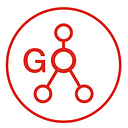GO continues to develop at a rapid pace. We bring our users along for the ride by inviting them to a briefing every 3 months to demo new features and share plans. Read on for a summary, the slides and an edited recording from the two sessions.
Unified, risk-informed planning
The IFRC have improved and extended the way we support country-level planning over the past year, a process known as unified planning. This has generated useful insights on the priorities and presence of the National Society and its partners, as well as situational and thematic analyses.
To date, 125 IFRC annual plans have been uploaded to GO country pages, found in a dedicated tab. Internal plans are also available behind the login for members of the Red Cross Red Crescent Movement. A simple visualisation of the data contained in the plans has been automatically generated to provide a simple overview.
We have also significantly improved the seasonal risk information on regional pages. Thanks to data from our partners IDMC, INFORM and UNDRR, it is now possible to use GO to identify and compare a country or set of country’s monthly risks, recurring hazards, risk of exposure and displacement — in absolute terms and taking each country’s population size into account. We continue to make regular, incremental changes to the risk information available on GO, so please get in touch if you have feedback to share.
DREF Final Report on GO… but not the final word
The final step to digitally transform the DREF data collection process has now been completed successfully. From first making a request for funding, reporting on operational adaptations, through to submitting their final report on activities completed, National Societies can now benefit from a simplified process and a bespoke system.
We are happy to have made this leap forward, but there’s plenty more to do. Among our next priorities are to surface the data for improved analysis, enabling operational and overview data visualisations. We also intend to include the Early Action Protocols, with the potential to connect to impact forecasts for imminent crises being channelled from our partners.
2023 workplan priorities
We also explained the items and timeframes slated for development on GO in 2023. These have been prioritised using the insights gained from the GO Study conducted last year, a comprehensive analysis of GO’s use cases, interface and potential services for the IFRC network.
More broadly, the GO workplan provides the overview of enhancements we aim to deliver on the platform in 2023, as well as how those features and functions link to other key IFRC data processes. Please get in touch if you are keen to contribute or collaborate on any of these features.
A warm invitation to help us
As GO has grown in importance to the IFRC network, so has the variety of its user stories. While member-centred analyses such as the GO study can help, there’s no replacing personalised interpretation and direction setting.
Please get in touch if you are available to support, and fit the profile outlined above, as ever, at: im@ifrc.org
Squeezing the pedal
We intend to accelerate development on GO by organising more regular, more focussed sprint sessions. In the next 5 months we aim to use the design sprint methodology to make significant progress to improve and extend country pages, simplify and harmonise reporting, introduce more granular spatial data, as well as improve the overall navigation and consistency of GO’s user interface and design.
We will be capturing notes from the sprints here, as well as wrapping all that up to share what we learned from adapting this approach from the web development world to that of a century old humanitarian institution.
90% of GO development is funded directly by our National Societies, and we depend on their continued support to deliver on these plans. If you would like to hear more about our work, or offer financial or material support, please contact im@ifrc.org
